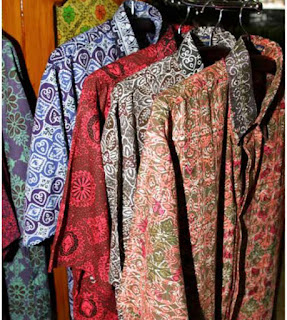The uniqueness and beautifulness of various Papua’s traditional motifs has now been transformed into Papua batik motifs. The various Papuan indigenous motifs are now represented into Papuan batik developed by local craftman. One of the batik artisan is Maria Pulanda, a housewife specializing in the development of traditional Papuan motifs, particularly Sentani’s motifs. To develop traditional batik, Sentani’s motifs in particular, Maria with her fellow artisan established a batik cooperative called KUB Dobonsolo.
Acoording to Maria, batik industry in Papua have developed since decade of 1980s. Unfortunately, the development of batik industry in Papua is considered slow. The slow development can be seen from the volume of production and number of artisan dealing with batik industry that are still very limited.
In Jayapura district, for example, based on the data from Ministry of lndustry and Trade of local goverment, there are currently around 10 Papuan batik craftmen. They produce batik by order only, otherwise, there is no production activities. It is due to many constraints they face, especially the lack of capital, human resource constraints, the limitation of management skills, and also the weak of entrepreneurial abilities.
Actually, the monthly order to Papuan batik with Sentani’s motifs is quite significant in number. The orders usually come from local government, churches, and public. However, the limited production capacity to be the biggest obstacle faced by the batik industry in Papua at this moment. This is true due to the the high turnover rate of craftmen in Papuan batik industry so that the readiness of the craftmen when the order has to be served is questionably. On the other hand, it takes time to traine and produce skillfull craftmen.
From the demand side, the market opportunity for Papuan batik is widely open. Even, the provincial government of Papua has obligated the employee to use batik clothes two days a week. Unfortunately, the demand can not be met by local batik industry due to the existing various constraints as mentioned before. Finally, to meet the demand, the order are fulfilled by Java printing clothes with Papuan batik motifs.
MAde in indonesia In addition, the batik industry in Papua depends heavily on the supply of raw materials and other supporting materials from Java such as cloth (mori), canting, wax, dyes and others.
In fact, the use of natural dyes is still very limited. The use of natural dyes is not well developed due to market demand that prefers to use synthetic dyes. It is associated with high market demand in Papua batik cloth with bright and striking colors. These kind of collors can not be served by natural dyes which tends to produce soft collors.
Source :http://www.pojokshare.com

































